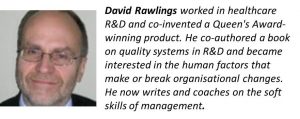Dave Rawlings helps get around that perennial problem……….When resolution is not enough!
Are you looking forward to 2018 in hope and anticipation or in fear and trepidation?
That might depend on whether you’re focused on what actions you’re going to take to achieve what you want in your life or you’re limited by what politicians, your boss or others might do. (Whether they smooth your way or frustrate you.)
However fearful and powerless we feel, most of us make resolutions of some kind at the beginning of the year as a statement of the things we want. We might even make plans for getting them!
I think it’s a fairly safe generalisation to say that New Year’s Resolutions mostly comprise things that you feel you “should” do rather than things that you wholeheartedly want. After all, if you really wanted to do them you probably would have by now. Giving up smoking, cutting down on drinking or getting more exercise are typical of resolutions that you’ve made many times before (and not just in January) but haven’t been able to carry through.
There can be many reasons for those past failures, such as fear of bad consequences or simply not knowing what to do to get what you want. There’s also the question of motivation: how much do you really want those things? Making your goals sufficiently compelling is probably the most important part of any plan that involves changing your own behaviour.
The first thing is to express what you want to have or what you want to do in a positive sense. For example, the stereotypical resolution is to give up something: smoking, drinking, over-eating, swearing etc. This emphasises what you’ll be losing and ignores what you’ll be gaining. So it’s not surprising if you’ve failed to keep such resolutions because they’re all about giving up something you like with no balancing pay-off. There’s nothing in it for you.
The negative formulation also focuses on the undesirable behaviour rather than the desired behaviour. And it’s an unfortunate truth that we do what we think about – the words “do not” are edited out by your unconscious mind. So, if I say to you: “Don’t think about a purple elephant”, what immediately jumps into your consciousness? And, if you say you want to eat less fatty food you immediately imagine eating fatty food – and recalling how tasty it is!
(If you drive up the A1 trunk road through Northumberland and into Scotland you’ll see lots of signs saying “Don’t Speed!” I wonder if any research has been done into the effects of the words used in such well-intentioned instructions.)
So, “I want to be a non-smoker because I’ll be healthier, feel better and have more money to spend on …” is a strong, positive statement of a resolution.
“I want to be slim so that I can wear more fashionable clothes and enjoy going out”, is much more likely to get you through the challenge than, “I’m giving up fried food”.
And doesn’t this work in the business context as well? The goal of winning or completing something is more likely to be committed to enthusiastically than one about cutting costs.
A positive statement of your goal is the first component of a “well-formed outcome”: a formulation that includes eight other components. It’s more comprehensive than the well-known SMART approach, challenging your motivation and taking account of the wider context.
Here’s the template, in the form of nine questions:
1. What are the benefits to you of the outcome?
Express what you positively want – as opposed to what you want to get rid of. For example: “I want to lead other people effectively,” rather than, “I don’t want to feel nervous”.
Ask repeatedly: “What will that give me?” Until you get to the real payoff. It might not be what you first thought. For example, a desire to lead people might really be about progressing your own career. Or about making a difference in the world. Or about your own self-esteem.
2. How will you know when you’ve got it?
What sensory evidence will you have? What will you see, hear and feel that will be different?
3. Can YOU start and maintain it?
Make sure it’s refined so that it’s something you have enough control over. It’s OK if you need others’ input, but take care not to express it in a way that gives anyone else a veto. For example, “My boss will appreciate me” is not something that you can achieve – your boss might never appreciate you, whatever you do.
“I will increase my level of performance to meet the standards my boss sets”, is achievable, provided you know what the standards are!
4. How does the outcome dovetail with others?
Understand how this outcome relates to others that you are pursuing. Make sure that they are all compatible. Where are the synergies?
5. When, where and with whom do you (and don’t you) want it?
Specify the particular circumstances within which you want the outcome. This helps you to create a compelling image of success and so build your belief in its inevitability.
6. What are the benefits of staying as you are?
There has to be something that has stopped you doing this before. As well as barriers (pain and distress you want to avoid) there are also the comfort factors inherent in your present situation. For example, perhaps part of you likes being in the background because it feels safe, and so your lack of confidence actually protects you.
It’s important to explore and consciously let go of these “secondary gains”, otherwise they will pull you back – just like they have before!
7. What resources do you need?
Time, skills, information, opportunity, help, money?
8. Is it worthwhile? What are the consequences?
Check that you REALLY want it. Anything is possible provided you’re prepared to pay the price. This thing might take a lot of work so make sure that it matters enough to you for you to see it through.
9. What is your first step?
The most important element? Decide what to do first and commit to doing it by a firm date.
Then have a very happy and successful New Year!

 Email: david@changeworkcoaching.com
Email: david@changeworkcoaching.com


